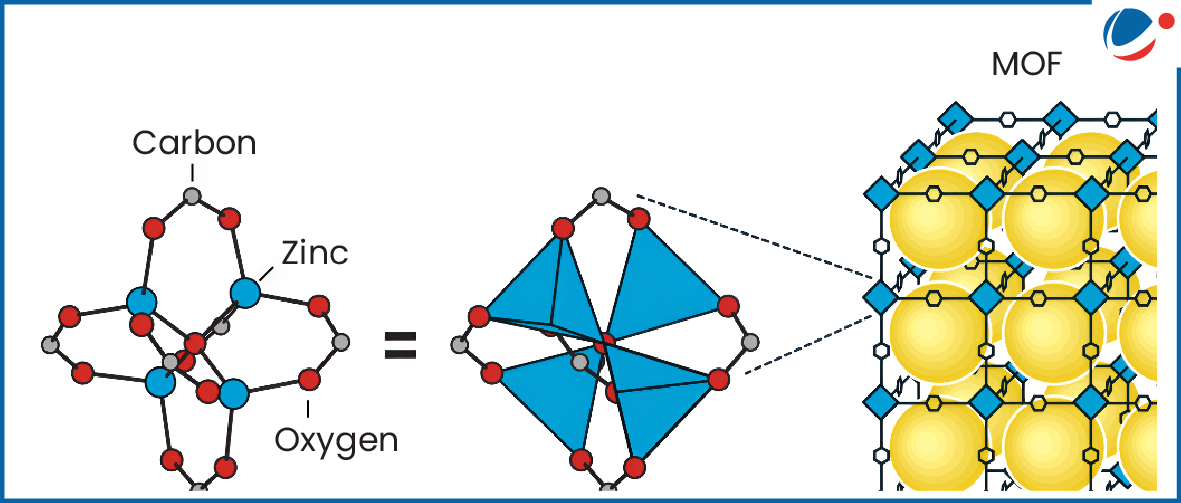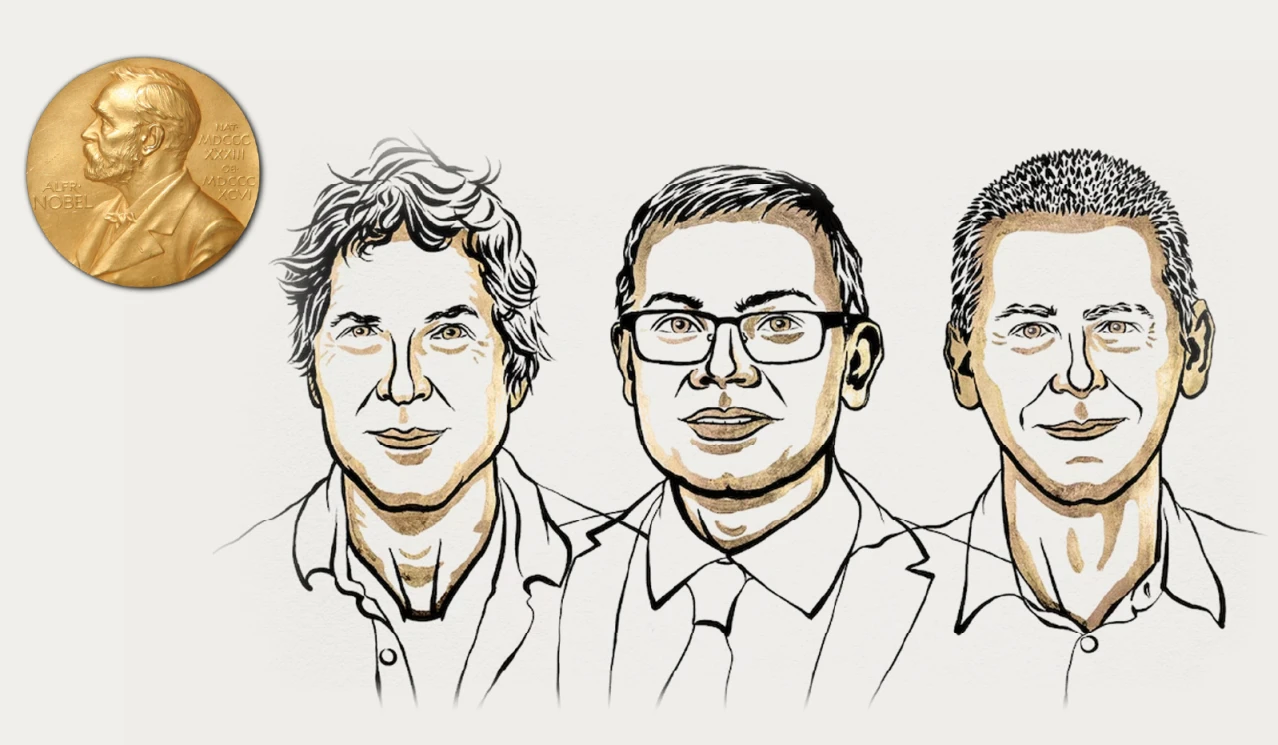Nobel Prize in Chemistry has been awarded to Susumu Kitagawa, Richard Robson and Omar Yaghi for their role in development of first Metal Organic Frameworks (MOF).
- Their pioneering work led to development of tens of thousands of different MOFs.
About MOFs
- MOFs are a form of molecular architecture that packs vast amounts of space into tiny structures just like Hermione Granger’s handbag in the Harry Potter novels, storing huge amounts of gas in a tiny volume.
- One gram of a MOF material can have so many pores that it can expose as much internal surface area as a football pitch.
- These pores act like tiny molecular rooms that can trap, separate, transform or transport gases, ions and other molecules.
- In a way, MOFs are like molecular hotels with countless doors, each programmed to admit only certain guests.
- One gram of a MOF material can have so many pores that it can expose as much internal surface area as a football pitch.

- MOF structure is composed of metal ions connected by organic (carbon-based) molecules, forming a three-dimensional network with large, porous cavities.
- The applications of MOFs stem from their porosity – which allows gases and liquids to pass through.
- And, by varying the building blocks used in the MOFs to control the size and shape of cavities, chemists can design them to capture and store specific substances.
Applications of MOF:
|





